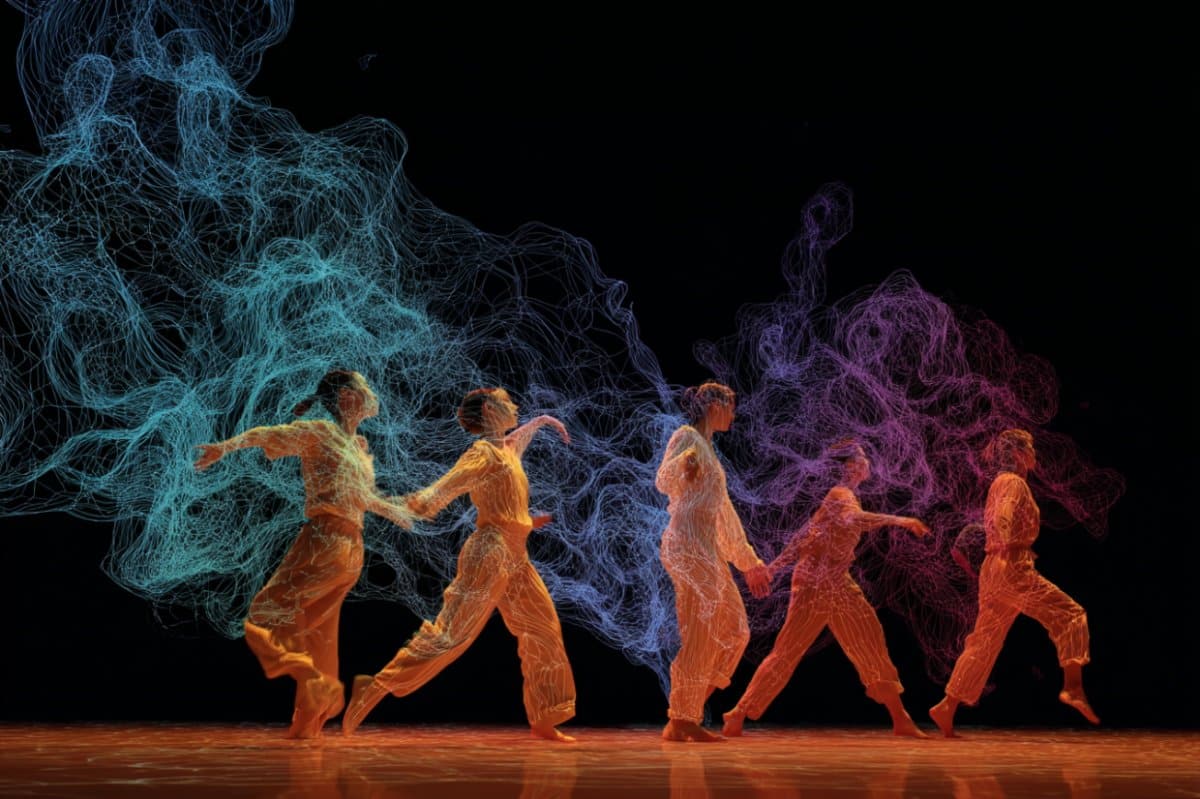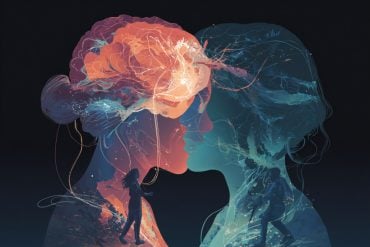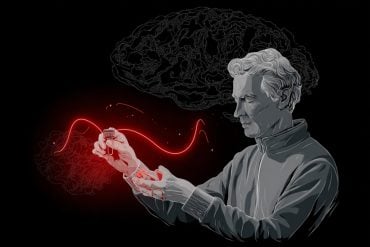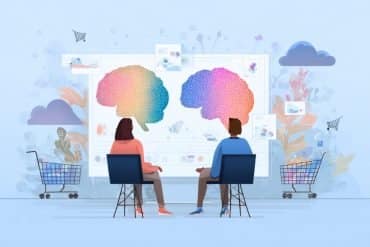Summary: A new study reveals that watching live dance performances synchronizes audience members’ brainwaves, reflecting shared focus and social connection. Using EEG headsets, researchers found stronger synchrony during live shows compared to watching alone, especially when performers made eye contact.
Even watching a recording in a group triggered some synchrony, but much less when viewed solo. The findings highlight how live performance creates measurable, collective engagement in ways recordings cannot replicate.
Key facts:
- Brain Synchrony: Audience members’ brainwaves synced during live dance, especially in the delta band.
- Social Liveness: Watching in a group—even a recording—boosted synchrony, compared to watching alone.
- Predictable Peaks: Moments choreographers predicted as engaging aligned with peak brain synchrony.
Source: Cell Press
A new study, published July 9 in the Cell Press journal iScience, suggests that the magic of live performance art may be reflected in our brains.
When people watched a live contemporary dance performance, their brainwaves synced up, signaling shared focus and attention—but that synchrony didn’t occur when people watched the same performance alone on video.

“We wanted to explore what makes live performance feel so different from watching a recording,” says senior author Guido Orgs, a dancer and neuroscientist at University College London (UCL).
“Dance felt like the perfect medium to investigate that because it’s so often experienced in the moment, in a shared space.”
The researchers brought the lab into the theater as part of the NEUROLIVE project — a collaboration between scientists and artists at UCL, Goldsmiths, University of London, the Max Planck Institute for Empirical Aesthetics, and Siobhan Davies Studios which investigates “liveness” — the unique quality of being present in a performance.
They outfitted 59 audience members with EEG headsets to track brainwaves across three live performances of Detective Work, a contemporary dance performance choreographed by Seke Chimutengwende in collaboration with dance artist Stephanie McMann.
They then invited other participants to watch a recording of the same piece, in the cinema with others or alone in a lab, to compare how different settings affect brain synchrony.
In the live shows, audience members’ brains synced in the delta band, a range of slow-frequency brainwaves typically associated with mind-wandering and social processing. The synchrony was especially strong when performers made direct eye contact with the crowd.
“Previous research has mostly linked attention to the faster alpha band brainwaves,” says first author Laura Rai, a cognitive neuroscientist at UCL.
“But in our study, it was the delta band that best captured shared engagement, which is surprising.”
Even without a live stage, watching the recorded performance together in a cinema still triggered brain synchrony. But when people watched alone in a lab, that synchrony weakened. The researchers say that the results suggest sharing the moment with others, or “social liveness,” may be as important as the performance itself.
“The fact that we find synchrony in the delta band links the experience of live dance to the idea that performing arts are social art forms,” says Orgs. “They are created by performers and an audience who are in the same space at the same time.”
The researchers also investigated whether moments of heightened engagement could be predicted. They asked choreographer Chimutengwende to identify scenes he expected would be most engaging. Audience synchrony peaked at nearly every moment he predicted.
“People often emphasize how personal and subjective art is, and that’s absolutely true regarding interpretation. But when it comes to attention, we found that how people engage with live performance can be surprisingly predictable and measurable,” says Orgs. “Essentially, the artists know what they’re doing.”
The team hopes to take the performance and study on a world tour one day, collecting more data and testing their findings in new settings. They also look forward to improved EEG technology. Current systems are bulky, movement sensitive, and time consuming to set up for large groups.
“There’s so much knowledge contained in live performance,” says co-author Matthias Sperling, artistic director and researcher at NEUROLIVE.
“The artists are experts in liveness, and so are the audience. This research offers a new way to tell stories about what’s happening in that rich, complex environment, using science to open a different window into those shared experiences.”
Funding:
This research was supported by funding from the European Research Council under the European Union’s Horizon 2020 research and innovation program.
About this neuroscience research news
Author: Julia Grimmett
Source: Cell Press
Contact: Julia Grimmett – Cell Press
Image: The image is credited to Neuroscience News
Original Research: Open access.
“Delta-band audience brain synchrony tracks engagement with live and recorded dance” by Guido Orgs et al. iScience
Abstract
Delta-band audience brain synchrony tracks engagement with live and recorded dance
Evolutionary theories claim that dance and music have evolved as collective rituals for social bonding and signaling. Yet, neuroscientific studies of these art forms typically involve people watching video or sound recordings alone in a laboratory.
Across three live performances of a dance choreography, we simultaneously measured real-time dynamics between the brains of up to 23 audience members using mobile wet-electrode EEG.
Interpersonal neural synchrony (INS) in the delta band (1–4 Hz) was highest when performers directly interacted with audience members (breaking the fourth wall) and varied systematically with the dancers’ movements and artistically predicted and actual continuous engagement.
In follow-up studies using video recordings of the performance, we show that audience brain synchrony and engagement are highest when dance is experienced live and together.
Our study shows that the ancient social functions of the performing arts are preserved in engagement with contemporary dance.







